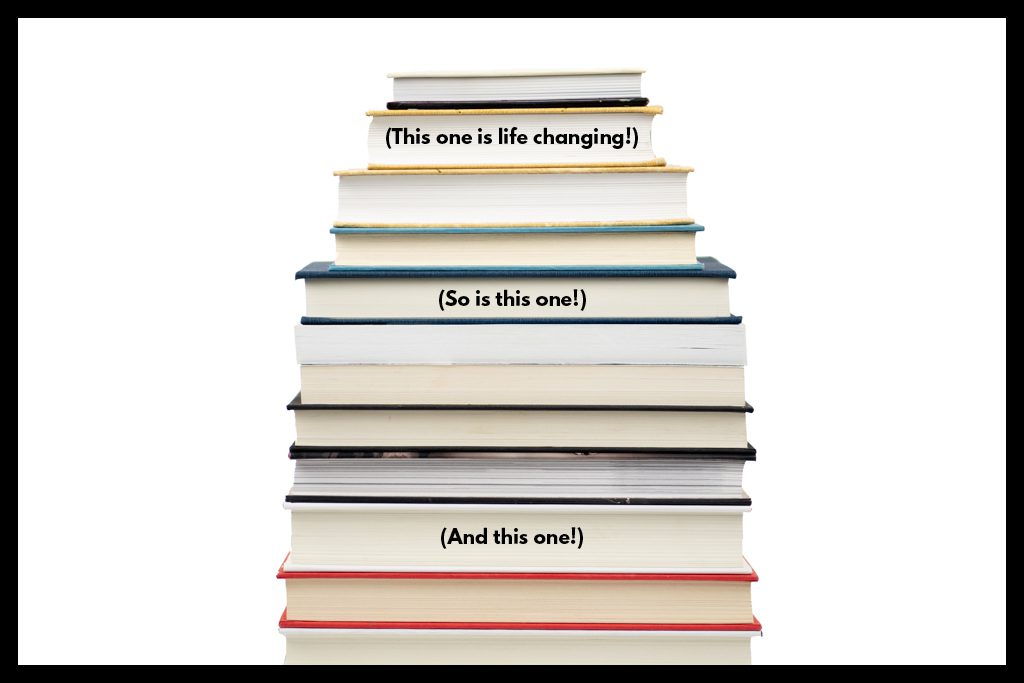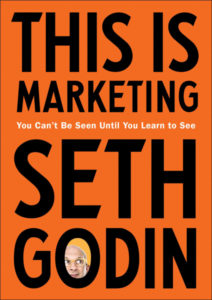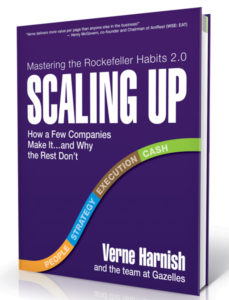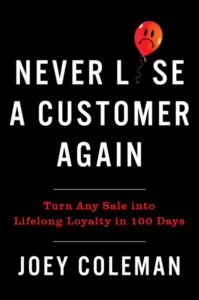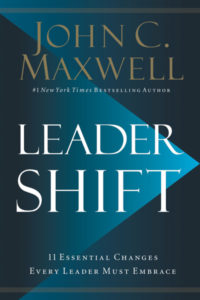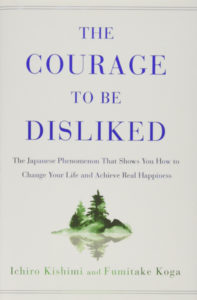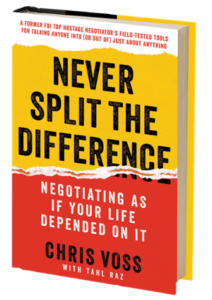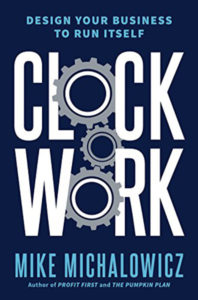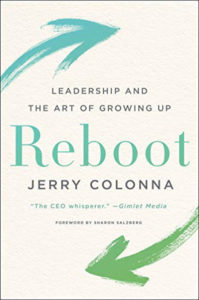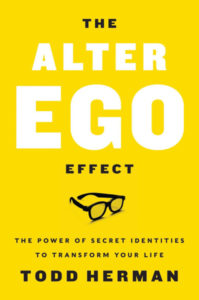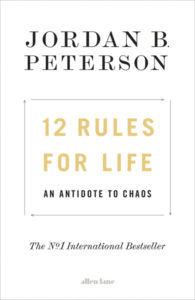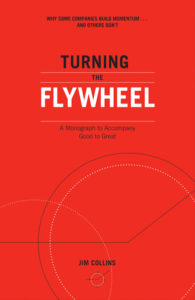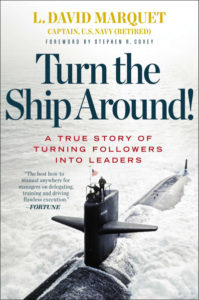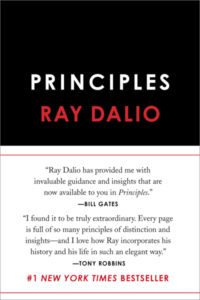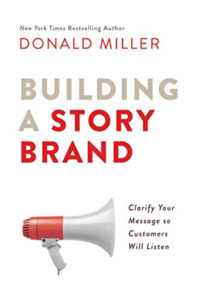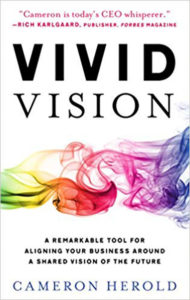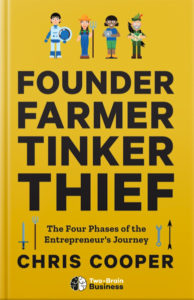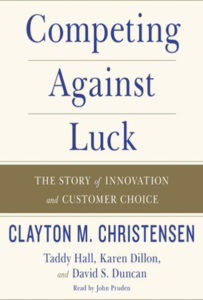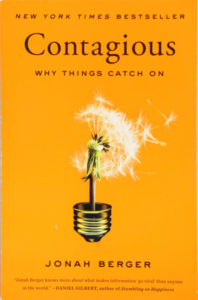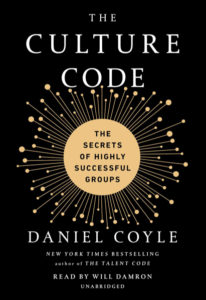Over a decade ago, I realized that my job had changed: I was no longer an employed personal trainer but a business owner.
The next epiphany was that my knowledge was asymmetrical: I knew a lot about fitness and exercise science but almost nothing about business.
I’ve always read for at least an hour every single day, but my crazy lifestyle was squeezing out reading time: I’d be in my truck by 4:30 a.m. to get to the gym and wouldn’t get home until 10 p.m. I’d collapse into bed without reading a word.
Then a friend turned me on to Audible. I bought a Seth Godin book. And I started to translate what I learned from general to specific: I wrote about how I’d use Seth’s material in my gym (publish more content). I did the same for other authors. And I started to churn through books pretty quickly.
But I still made two rookie mistakes that cost me a ton of time: I made myself finish every book before starting the next. And I also thought it was best to get a ton of different books instead of focusing hard on a few.
Naval Ravikant recently tweeted: “The smarter you get, the slower you read.” That was interesting but not true for me in all cases. Sometimes I can read the first few chapters of a book and skip the rest (as in David Goggins’ book). Sometimes I think it’s better to reread a great book and pick up the smaller pebbles that I missed than to buy a new one. I listen to “Resilience” every year.
The hard part isn’t finding a good book. The hard part now is finding the right book at the right time and catching the most important message. There are now a handful of services selling 10-minute versions of top books. I actually wrote “Founder, Farmer, Tinker, Thief” to filter huge ideas according to when the entrepreneur needs them most.
Top Tips for Buying and Learning From Books
1. Eighty percent of the time, buy the audio version. Twenty percent of the time, buy the print version. For instance, the first chapter of “Scaling Up” is almost impossible to follow in audio. You have to buy the print version. On the other hand, any of Nassim Taleb’s books are far more entertaining as audio.
2. Don’t be scared to buy multiple copies. I found myself lending out “Rich Dad, Poor Dad” to everyone and never having a copy on hand. Now, if you visit the workshop, you’ll see 20 copies of that book, 20 copies of “How to Win Friends and Influence People,” and 20 copies of “Never Split the Difference” on my shelves. I hand them out to nearly everyone (my nieces and nephews have stacks of books from Uncle Chris by now).
3. Don’t place a budget on books. Like mentorship, you’ll get personal growth from books … but your business will pay for it. Every book is a tax-free, life-changing event.
4. There’s no such thing as a bad book. But don’t get buried: Overwhelm leads to paralysis. After you take our Founder, Farmer, Tinker, Thief Test, make the best choices based on your current phase of entrepreneurship.
5. It’s better to retain a little than to read a lot. To make the messages from each book stick, I have to “teach them back.” That means talking about them with other people, or just blogging about them in my own words. That’s why I started my original blog (dontbuyads.com) back in 2009: to make the lessons I was learning stick better. It works.
The Top 11
This Is Marketing—Seth Godin
Seth is trend-proof. He got that way by teaching principles instead of tactics. While we, the folks in the trenches, can be swayed by sexy business fads (like Facebook marketing, office “culture” and personality testing), I always come back to Seth’s message of authenticity and relationships. And the experts always come back, too: Facebook now says that building a content platform is critical for paid lead generation to be successful, for instance.
This is possibly his most specific book, and it’s required reading for anyone who wants to succeed at the long game. Seriously, buy it.
Recommended for: Founders, Farmers, Tinkers and Thieves.
Scaling Up—Verne Harnish
It’s rare for an author to say “if you buy this book, you don’t have to read my other books,” but that’s what attracted me to “Scaling Up.”
As an author, I sometimes wish I could go back and rewrite “Two-Brain Business” (or even take it off the shelves, because “Founder, Farmer, Tinker, Thief“ is so much better).
“Scaling Up” is a step-by-step process for growing your business as a CEO.
Recommended for: Farmers preparing to be Tinkers.
Never Lose a Customer Again—Joey Coleman
The key to business growth isn’t customer acquisition; it’s customer retention. Habits are formed slowly. Coleman believes they require careful nurturing over 100 days. The book focuses on mapping the client journey in your business and then digging really deep into the first 100 days. We teach the client journey map in the Two-Brain Incubator, and our focus has always been on retention before marketing. This is a book every gym owner should read.
Recommended for: Founders and Farmers.
Leadershift—John Maxwell
Most business books focus on “what can you change, add or improve?” Maxwell’s books tend to focus on the how: How to lead through change, how to inspire others to stay on the bus when the destination isn’t clear and how to help people grow as leaders. In fact, many of the other books on this list borrow from Maxwell. They say things like “a leader’s job is to create leaders” and other maxims that originally came from Maxwell. So reading Maxwell is going back to the source, in many cases.
The hard part of shifting from Farmer Phase to Tinker Phase isn’t the money: it’s leveling up from “boss” to “leader.” Very few of us have the education, experience or practice necessary to do so when the time comes, so we have to lean on lessons learned in the trenches from guys like Maxwell. Half of the value of his books is in the content; the other half is in the delivery. Maxwell doesn’t bury anyone in statistics. Most of his teaching comes from stories. You can learn a lot about leadership just by observing how he leads his audience.
Recommended for: Farmers and Tinkers.
The Courage to Be Disliked—Ichiro Kishimi
This book isn’t really about being “disliked.” It’s really about Joseph Adler, who wrote that “every problem is an interpersonal relationship problem.”
The book digs deep into Adlerian psychology and gives entrepreneurs really solid tools for having tough conversations, for relating to staff better and for knowing when to draw really clear lines. For me, the book helped me realize that being clear isn’t harsh; it’s actually doing everyone a favor.
Recommended for: Tinkers.
Never Split the Difference: Negotiating as if Your Life Depended on It—Chris Voss
It’s rare for business books to be directive. Most teach broad concepts and ideas, and good entrepreneurs are left to figure out how to apply them in their own businesses. I try to write directive books (“Do exactly these things in this order”). But “Never Split the Difference” is a directive book covering one of the hardest topics of all: really hard conversations when there’s a lot on the line.
We lean heavily on Voss’ lessons when we’re guiding entrepreneurs through rate increases, firing staff or removing tough clients. I keep 20 copies of this book in my office and frequently ship a copy to my own mentorship clients. Like “Rich Dad, Poor Dad” and “How to Win Friends and Influence People,” I give a copy of this book to kids in my family when they turn 18.
This book is so important that we’re bringing Voss in to deliver the keynote speech at the Two-Brain Summit in 2020.
Recommended for: Founders and Farmers.
Clockwork—Mike Michalowicz
I think it’s been a few years since I published a list that didn’t have Mike Michalowicz on it. His books are funny and easy to read—and always include at least one key concept that changes the way you look at business. In “The Pumpkin Plan,” Michalowicz taught us how to identify and keep our best clients and to build our businesses around them. In “Profit First,” he taught us how to make sure we got paid. In “Clockwork,” I think Michalowicz’s biggest idea is the Queen Bee Role.
A CEO should narrow his or her focus to doing the one thing that grows the company. For me, that’s thinking and then writing about it. That’s hard for people to understand—many people think I’m riding my bike for fun or “hiding” in my office when the door is closed. But really, the more time I spend getting into flow state, staying in flow state and publishing content, the better my businesses grow. That’s my QBR.
Recommended for: Tinkers.
Reboot—Jerry Colonna
I often say that “the people who got you here might not get you there.” But what if that person is you?
The Founder’s lifestyle—long hours alone, working with single-minded focus—can harm relationships and business. Ultimately, entrepreneurs need completely different skill sets—like the ability to lead a team and trust that their vision will be fulfilled. But the things that made them great in Founder Phase are probably harmful in Farmer Phase. So they need a “reboot.”
Jerry Colonna is called the “CEO Whisperer” in his Amazon profile (and he often winds up whispering in the book). It’s a guided journey through your demons, your ego and your weaknesses. And it’s directive: There are specific exercises and assignments to help you take the first steps to bettering yourself. I’ve never found a book that gave me a sense of therapy. But underneath all the habits, skills and knowledge is you—and you’re not perfect. Here’s how to deal with it, fix your problems and grow as a person.
Recommended for: Tinkers.
The Alter Ego Effect—Todd Herman
In 2018, I identified that I wasn’t equipped to lead a rapidly growing international company, so I started seeking mentors to help me learn to lead. I changed my world view and habits significantly, had some hard conversations and took some bold risks. But it was exhausting, and “boss Chris” wasn’t really the person I wanted to be at home. So Herman’s book made me ask: “Can I be the CEO part time and shed that skin when I don’t need it?”
According to the book, you can. And Herman shares a ton of examples that show how celebrities and athletes have used the “alter ego” to do the same. We introduced the concept to gym owners as part of their sales training (Herman originally tested the method when he was selling personal training). It’s definitely useful, and I signed up for Herman’s one-on-one guidance because the book was so powerful.
The hard part is switching into and out of an alter ego … but, like fitness, it takes practice. Herman uses “totems” at home to switch into “dad mode.”
Recommended for: Farmers.
12 Rules for Life—Jordan Peterson
This isn’t promoted as a business book, but few books make me pull my truck to the side of the road and say “holy shit.” So I included it. And the message definitely has bearing on you as a leader in the public eye.
Jordan Peterson is a polarizing figure. I wondered, “What’s this guy actually saying?” so I read the book.
The book itself is an epiphany. I recommend it to everyone. “Make your kids strong, not safe” is a transcendent lesson that every leader can use (replace “kids” with “business” or “relationship” or whatever). And Peterson models that “strong, not safe” approach to life: He’s attacked in the media pretty often for being anti-whatever. But his critics almost always take his message out of context to further their causes.
Peterson is an example of standing up for your beliefs (and also a warning). If you say “this is wrong” when you disagree with a popular trend, you’ll attract criticism in volumes. Not everyone can handle that. I certainly couldn’t take the storm of hate that Peterson deals with daily.
Recommended for: Everyone (you’ll either love it or hate it).
Turning the Flywheel—Jim Collins
Collins doesn’t publish often. He doesn’t even appear on podcasts often and rarely takes the stage. But when he talks, everyone listens.
“Turning the Flywheel” was a curiosity buy—I loved “Good to Great,” “Great by Choice” and “Built to Last,” and I wondered what a “monograph” meant to Collins. This is really a how-to book: His previous books had so many huge concepts that he needed something to tie them all together. Don’t read this until you’ve read at least three of his other books, but when you have, this is an inspiration.
Recommended for: Farmers and Tinkers.
Honorable Mentions
Atomic Habits—James Clear
We’re in the business of behavioral change. “Atomic Habits” is a more useful tool for a fitness coach than almost any fitness book. It’s directive, and if coaches simply copied his model with their clients, they’d make more money for longer. Most of the big ideas are front-loaded, so this is a quick read.
Turn the Ship Around—David Marquet
A great story about creating change in a change-resistant environment. The typical model of submarine command depends on one leader rigorously enforcing predetermined rules. But Marquet pivoted—tough to do in the Navy—and eventually got buy-in from his crew. Best lesson: A leader should be measured on the success of his team years after he’s gone.
Unfortunately, the stories didn’t lead to a clear directive path (“Do this in your company”) but did offer some exercises (“Ask yourself, ‘How can I use this in my company?’”).
The Like Switch—Jack Schafer
Another ex-FBI guy, Schafer is behavioral scientist to Chris Voss’ hostage negotiator, and the book reads like it. “The Like Switch” is really interesting and good at explaining why people behave the way they do. But where Voss’ book is directive (Step 1: do this; Step 2: do this), Schafer’s is mostly theory. If you want a scientific dive into “How to Win Friends and Influence People,” “The Like Switch” is a good one.
 Principles—Ray Dalio
Principles—Ray Dalio
Dalio’s premise—that life, management, economics and investing can all be systemized into rules and understood like machines—is a pretty bold one. I was excited to read it. But “Principles” mostly just created “book guilt” for me: I have a lot of friends who loved this book, but I really couldn’t get into it. So it sits in my Audible account unfinished.
This I Know—Terry O’Reilly
The counter to Dalio’s book is “This I Know.” Dalio has deep insights and draws conclusions based on profound experience. O’Reilly tells amazing stories. His book is really hard to put down. And while his insights might not be deep (he actually tries to present opposing viewpoints instead of saying “do this one thing”), I’m a huge O’Reilly fan. You can learn more from his delivery than from the content of most books on this list.
 Building a Storybrand—Donald Miller
Building a Storybrand—Donald Miller
A marketer’s education should start with this book. But it shouldn’t end there. Most of us try to be too artsy—we make complicated websites that actually stop people from booking or signing up. We try to be different at the expense of being clear. Miller’s book is the antidote. It’s well written and clear (of course). Consider this the CrossFit Level 1 Course: enough to get you out on the floor. And Miller’s storytelling makes the message stick. But he doesn’t provide conversion data to back up his claims. If you don’t read any other marketing book this year, read this one. But I hope you read more than one.
Simple Numbers—Greg Crabtree
Crabtree is a “celebrity accountant,” a status that’s pretty hard to achieve. His book makes accounting as clear as it can be. I was thrilled to find a higher-level accounting method that dovetails perfectly with the 4/9ths and Profit First models that we recommend at Two-Brain. And after reading the book, I signed up for his service; his firm now provides the CFO for my company. They build dashboards that help me figure out where to spend and where to save, and they bring a lot of clarity to my rapidly expanding company.
 Vivid Vision—Cameron Herold
Vivid Vision—Cameron Herold
I started listening to this book while riding my bike. But after an hour, I realized that I should have been sitting in front of a laptop. The book is so directive that you could listen to a chapter and clearly understand the work to do, then listen to the next chapter, and so on. Several of the mentors at Two-Brain recommend this book, and our CPO is in Herold’s mentoring group. Highly recommended for entrepreneurs at Tinker level and above.
Books I Didn’t Like (But You Might)
Can’t Hurt Me—David Goggins
Nassim Taleb once wrote that “most books would have made a good article,” and Naval Ravikant followed with “most articles would make a good tweet.” Like many business books, “Can’t Hurt Me” started with a good premise and then filled hundreds of pages with examples. The whole book could be summed up in a hashtag: #HTFU.
The Zappos Experience—Joseph A. Michelli
The Zappos story was a revolutionary one in 2005: an online retailer whose clients were raving fans. But Zappos leaders claim that their real strength is in creating “culture” in their team. In fact, “culture”—the biggest buzzword of 2019—probably originated with Zappos.
There was nothing really new in the book. But I’m biased: The team of mentors at Two-Brain gets to work on interesting problems all day long. They’re emotionally invested in their work. Zappos staff sells shoes. They need workplace engagement, tricks and “culture boosters” to keep them around; I don’t.
If you run a software company or online shoe store, you might need to artificially infuse “culture” into your workplace. If you run a service business, your culture is determined by your care for your clients.
Other Recommendations
Founder, Farmer, Tinker, Thief—Chris Cooper
Yeah, I wrote this one. After publishing “Two-Brain Business” in 2012, I’ve spent thousands of hours on the phone with other gym owners, collected libraries full of data and seen new ideas rise (and old ideas fall). I’ve spent hundreds of thousands of dollars in mentorship, read hundreds of books and spent thousands of hours online talking to others in the industry.
There’s a lot of knowledge out there. Frankly, there are too many ideas. The most common problem for entrepreneurs is actually overwhelm: We can’t act on everything, so we get paralyzed.
I wrote ‘Founder, Farmer, Tinker, Thief” to give you the distillate: When you boil it all down, these are the habits, tactics and directives that you’re left with. And because not everyone needs everything at the same time, I broke the entrepreneurial journey into four phases. This book is a filter for the best strategies that we’ve actually proven to work.
Who Do You Want Your Customers to Become?—Michael Schrage
Schrage’s premise is to start with ideal customer outcomes and work backward. How will your customers be transformed by your service? What will they look like after they’ve used your service successfully?
This is a useful idea for the service industry, and I think it could help gym owners. By painting an aspirational avatar (“here’s what a client should look like after three years at my gym”), a coach could work backward to set up an “ideal client journey.” But those are my ideas, not Schrage’s. His book sticks to high-level concepts and the usual examples (Google, Apple, Starbucks, etc.).
 Competing Against Luck—Clayton Christensen
Competing Against Luck—Clayton Christensen
My mentor, Todd Herman, told me that I needed to listen to Christensen. He’s a pretty dry speaker, so his YouTube videos aren’t popular. But his ideas are: Others talk about him in their engaging videos.
The biggest epiphany I got from Mike Michalowicz’s “Pumpkin Plan” (now required reading for all Two-Brain clients) is that I should ask my best clients what they want instead of trying to guess. Christensen’s message compounds on that concept: We should all ask ourselves “What job is this service being hired to do?”
Christensen’s “jobs to be done” idea is a huge game-changer. But his explanations are so complex that other authors will probably simplify his ideas and make far more money on them.
Abundance—Peter Diamandis
I’m a fan of Diamandis, and this book is a good “big-picture” read. It reminds me of “Guns, Germs and Steel” but with a future-focused perspective instead of a historical one.
 Contagious—Jonah Berger
Contagious—Jonah Berger
I wrote that “The Like Switch” was the science behind “How to Win Friends and Influence People.” Contagious is like that for “Made to Stick.” But Berger’s book is entertaining, with examples from music and pop culture. “Earworms,” memes and viral videos are all examined in the book. It’s academic instead of directive—you’re never told “do exactly this one thing today”—but it’s still a good lens through which to view your own content.
The Infinite Game—Simon Sinek
I had this book on preorder for nine months, and it was a great surprise when it was finally published. I’m not always a fan of Sinek’s work. His theories sound good (“Leaders Eat Last”) but often lack in-the-trenches proof. So when this book started out really strong, I was thrilled.
I wrote about “playing the Infinite Game” in the fitness business because I was very inspired by the first few chapters. Unfortunately, the book took a dip in the middle and spent several hours berating CEOs for focusing on shareholder profit instead of employee happiness. Everyone agrees that employee happiness is important, but Sinek makes a logical leap over and over: that happy employees will automatically create happier customers which will automatically create more profit. As gym owners know, that’s a deadly false belief.
Luckily, I found myself with a long bike ride and nothing else to read, so I finished the last hour of the book. I’m glad I did: Sinek comes on strong again at the end. But you can probably skip the middle.
The Culture Code—Daniel Coyle
“Culture” is the top buzzword of 2019. As more and more people work remotely or sell a product online, we lose our sense of “cause.” In the description of the Zappos book above, I said that people in the service industry probably don’t need tips and tricks in the workplace—care for the client was probably enough.
Coyle lists many strategies for “building culture” that he pulled from the Navy SEALs and pro sports teams, but what’s missing is the reason people signed up for these teams in the first place. That reason was just cause: They believed in a mission higher than themselves (or, maybe, fame and fortune). The effect of cause is huge, and outweighs working conditions, boredom and the lure of incrementally better benefits or wages. When you give up a high-paying job to help people get healthy, you probably don’t need drinking games or cereal in your boardrooms to keep you engaged.
If you do need those things, then “The Culture Code” has some great examples.
Resilience—Eric Greitens
Every summer, I roll up my garage door, pull out my barbell and listen to “Resilience.”
Greitens is a storyteller. He’s a real hero: He could have taken an academic path, but after volunteering in refugee camps, he realized that some situations required force to help save people.
That was a huge epiphany for me. His stories about boxing as a poor kid, turning down teaching jobs to volunteer in war-torn areas and ultimately leading a SEAL team are more than inspirational. They give perspective on your life and your place in the world.
What do you think of these lists? Do you agree with the summaries or have something to add about one of the books above? Did we miss something? Did you read something that changed your life or your business in 2019? Please leave a comment below and let us know what we should read next!
